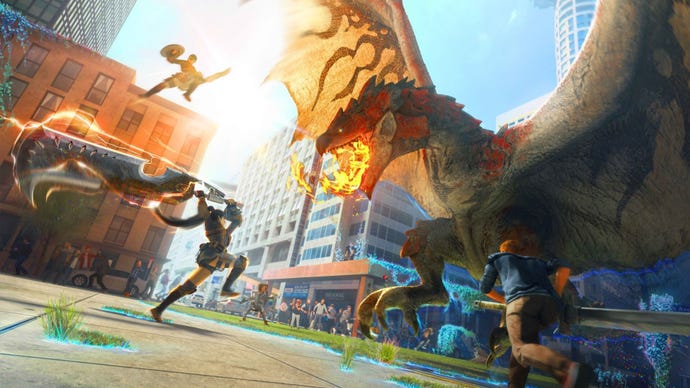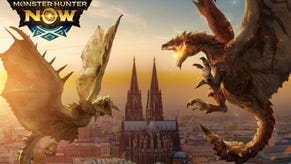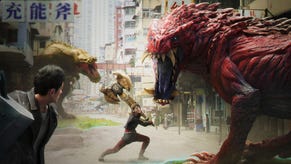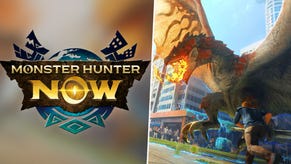Monster Hunter Now has what it takes to unseat Pokemon Go as your favourite mobile game
It’s been seven years since the Pokemon Go phenomena first exploded – and now it looks like Capcom could be coming for its crown.
Monster Hunter – a tactile game all about dodging with split-second reflexes, aiming with precision at delicate weak spots, and pulling off complex combos with plenty of button-presses – should not work on mobile. It simply shouldn’t; there’s too much to crunch down, to minimise and make understandable with swipes and taps and presses. Yet, somehow, Monster Hunter Now manages it. It’s nothing short of magic.
Pokemon on (or in) your phone made sense: explore, collect them, enjoy quick 10 seconds-or-less encounters, and team up with your friends to catch ‘em all! Monster Hunter – though also a very social game, at its core – feels far more console-y. But shrunk down and presented on your iPhone or Android… it’s such a good fit, it’s simply astonishing something like this hasn’t happened before.
The core loop – hunt, carve, upgrade, repeat – is intact, wholesale. Find a monster, kill it, hammer its body parts into your gear, and get back in the field. Break its horns or slice off its tail and get better drops, level up quicker. Monster Hunter Now doesn’t interfere with the formula that’s sold 22 million games. Good.
But how you go about doing that, how you make your hunter slide and roll and hop and cut and carve, that’s the impressive thing here. Like spinning and tossing your PokeBall, it’s all done with your index finger: swipe to left or right to dodge, swipe up or down to advance or retreat, tap to attack, hold to charge, or block. And you can manually tilt your handset to aim your bow or ranged weapon, if that’s your thing (but I really can’t stand motion controls). Simple! So simple even the non-Monster Hunter players in my session were dancing around and interrupting monster attacks like they’d been playing since Monster Hunter Tri by the time we had to give the phones back.

I have been a loyal sword and shield user for years now, so blocking an advanced Kula-Ya-Ku, watching it reel, then unleashing a barrage of slashing and smashing attacks in response felt great. Not as good as it does pulling it off on the Switch, say, but still it’s still pretty thrilling. Teaming up with an ally (you can bring up to four people into one fight, and the game will automatically detect who’s around you –no awkward menu wrestling here) opens up your options; are you going to circle around to the Pukei-Pukei’s tail and slice it off whilst the hammer user bonks it on the noggin, or are you going to work on the forelegs and hope for a claw break?
The choice is yours! You have 75 seconds to kill something – given that mainline Monster Hunter games often take around 30 minutes, you’d think it’d be too short. Too surfacce-level. But it’s not: condensing the whole thing into a rock-paper-scissors game of dodge-block-attack is intuitive and understandable, fun and compelling. You put a monster to bed and you’re itching for another.
If you’re on the go – you’re at the gym, and you see a Rathalos, but can’t fight it yet – you can paintball it, effectively saving it for later so that you can fight it back at home. If there are other players at home (maybe you’ve gotten your partner into this), you can choose to fight it together, so you can cut about town in your matching pauldrons. Nerds.
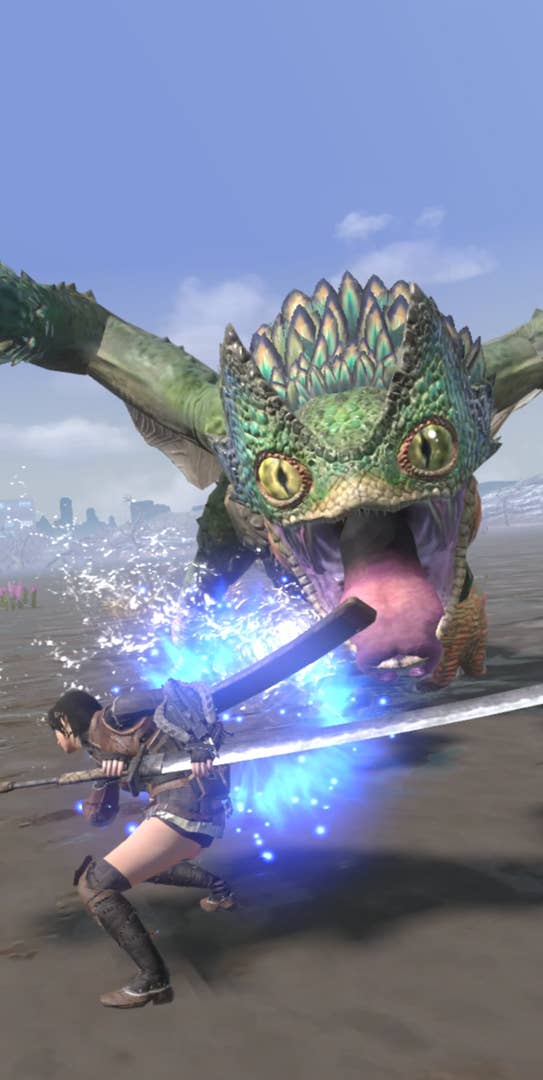
Like Pokemon Go, your hometown is transformed into a featureless map with a couple of points of interest. But unlike Pokemon Go, this map is split into biomes – and these renew every so often. So if you live in the city, don’t fret; you’re just as likely to get snow maps, or desert maps, or jungle maps, as someone that lives in the country. These biomes have specific resources you can gather, like ore or mushrooms, and populated by beasts you need to destory.
The monsters seemed to respawn fairly often, but who knows that that cadence will be in the final game. There are challenges that cumulate in bigger battles against harder monsters that come with their own unique animations, and there are even Palicos that run around and grab resources for you. This is a Monster Hunter game, a proper Monster Hunter game.
And everything is taken from Monster Hunter World – the animations, the character models, the weapons, the lot. So, if you’re a big serious grumpy gamer, you can justify playing a mobile game by telling yourself it’s Monster Hunter World 2.0 (at least until we get the real thing). There’s so much potential for expansion – more monsters, more weapons, more biomes – and the developers told me they’re already looking into doing things like Community Days or Pokemon Go-like real-world celebrations. Watch this space.

Niantic, though a little unpopular with the Pokemon Go playerbase at the moment, has proved time and again that it has the magic touch when it comes to harnessing the intricacies and intimicaies that makes an IP special, and making them work on the tiny screen. Pokemon Go’s success could have been a fluke; a global phenomena that bottled that ‘right place, right time’ lightning. But Monster Hunter Now proves that it wasn’t, that Niantic is a developer with as much talent, creativity, and business acumen as any Capcom, Bethesda, or – and I mean this – even Nintendo.
This IP may not be as big, and the game may well struggle to find an audience outside of Japan that Pokemon didn’t, but Monster Hunter Now has got a loyal player in me, for sure. I went from thinking this was a weird little experiment to waiting for release and signing up for the beta within 10 minutes of picking it up – the same thing I, and millions of others, did with Pokemon Go. Even if Monster Hunter isn’t your thing, you should give this one a go – you might just have a new favourite game to play on your phone.
